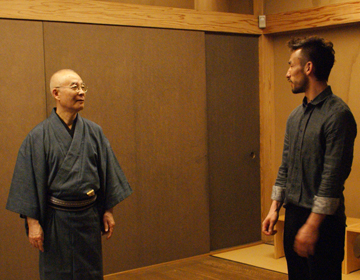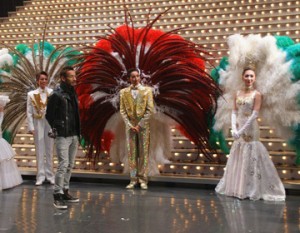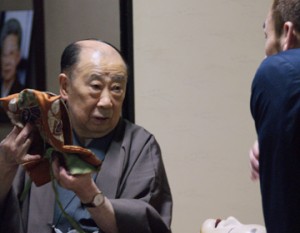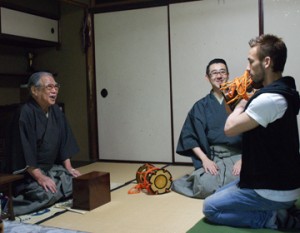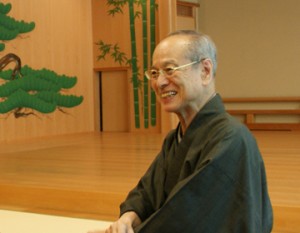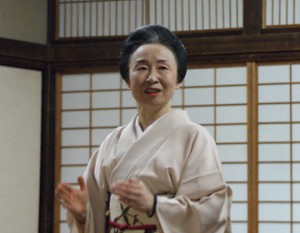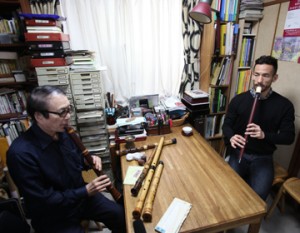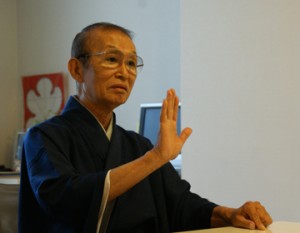Ideal Movements are Natural
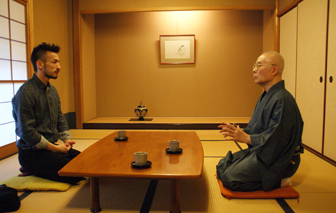
The school of Japanese dancing Onoe-ryu was founded by Onoe Kikugoro as the first Iemoto. Onoe Bokusetsu is the 3rd Iemoto. He studied under the first Iemoto, Onoe Kikunojo when he was 9 and at 21, succeeded the name Onoe Kikunojo and simultaneously succeeded the Iemoto as the 3rd generation. Two years later, he choreographed and directed ”Azumaodori” at Tokyo Shinbashi, ”Kamogawa odori” at Pontocho Kyoto, and continued directing and choreographing dances as well as performing himself. He has been actively performing abroad as well as domestically, visiting France, United States, Spain, and China.”
Bokusetsu said, ”Even when I am watching a performance, I tend to observe how the performers move. Their physical movements. If their movements are not nimble, it bores me. But it’s not enough to just be swift and nimble. The ideal movement is natural, and has to make sense.
The sophisticated ”flow”
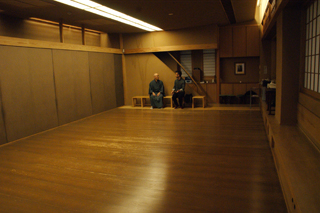
There are many schools of Japanese dancing. And each school has its own features. When we asked about the most prominent feature of Onoe-ryu, the answer was ”the flow”.
”A sophisticated and suave movement. You might say that it is at the forefront of Japanese dance. There are no unnecessary movements, and the dance moves are suave and smooth, without resisting air. You have to think about how you can befriend the air. Our school puts priority on the flowing movements.”
You may find it odd when you hear the words, ”befriend the air”. Bokusetsu added, ”I tell my disciples to imagine moving in water. In water, you will experience the water’s resistance. Substitute the water with air in your mind, and always be conscious of the air. Once you pay attention to gravity and air, you will be rid of wasteful movements and it will start to make sense.” The dances not only tell a story, but it’s also about how you pursue ideal movements. All this are linked to the sophisticated dancing moves of Onoe-ryu.
Applying rationality
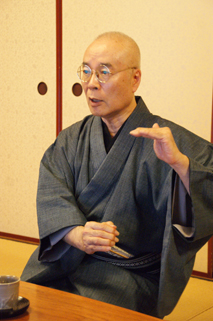
Nakata asked, ”With Japanese dancing, what do you learn first? The movements? Manners?”
”First you learn breathing. You move in sync with your breathing. You move with your breathing. Once you are able to do this, it opens up a variety of possible movements. It is the fundamental basics. You may be prone to think of style, but the basics lie in the logic.” By the word ”logic,” Bokusetsu refers to physically understanding the natural science of the energy that controls human movements along with gravity, and nature.
”It is based in logic, or you could even say that we must pursue Japanese dances scientifically, to be able to be persuasive and beautiful. It would be ideal to reach this stage and then add your individual uniqueness to it. Only then shall Japanese dancing advance.” Bokutetsu came to believe in this philosophy as a result of the countless practices and performances he has taken on.
”Modern Japanese dancing has partially jumped out of Kabuki and Noh, soaking up various things to become what it is today. It is modern dance. However, even with Kabuki, storylines appeared quite recently. Prior to that, Kabuki were dances. These days, everything is constantly being renovated. That is why I feel we cannot stop.” It is important to learn from the past and understand tradition. Furthermore, always having ambition creates the culture of the times.



